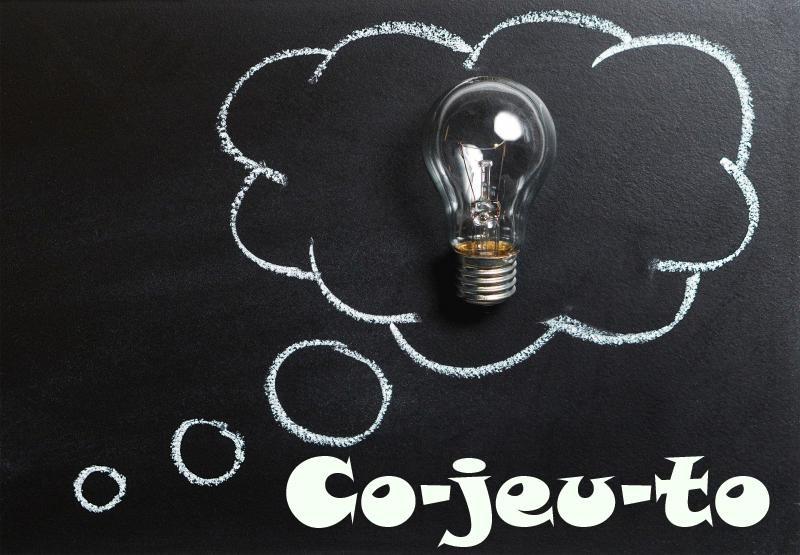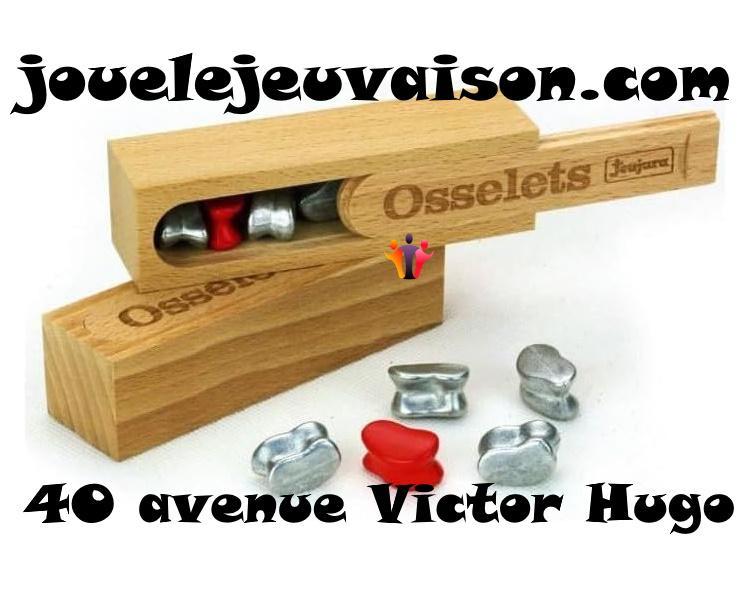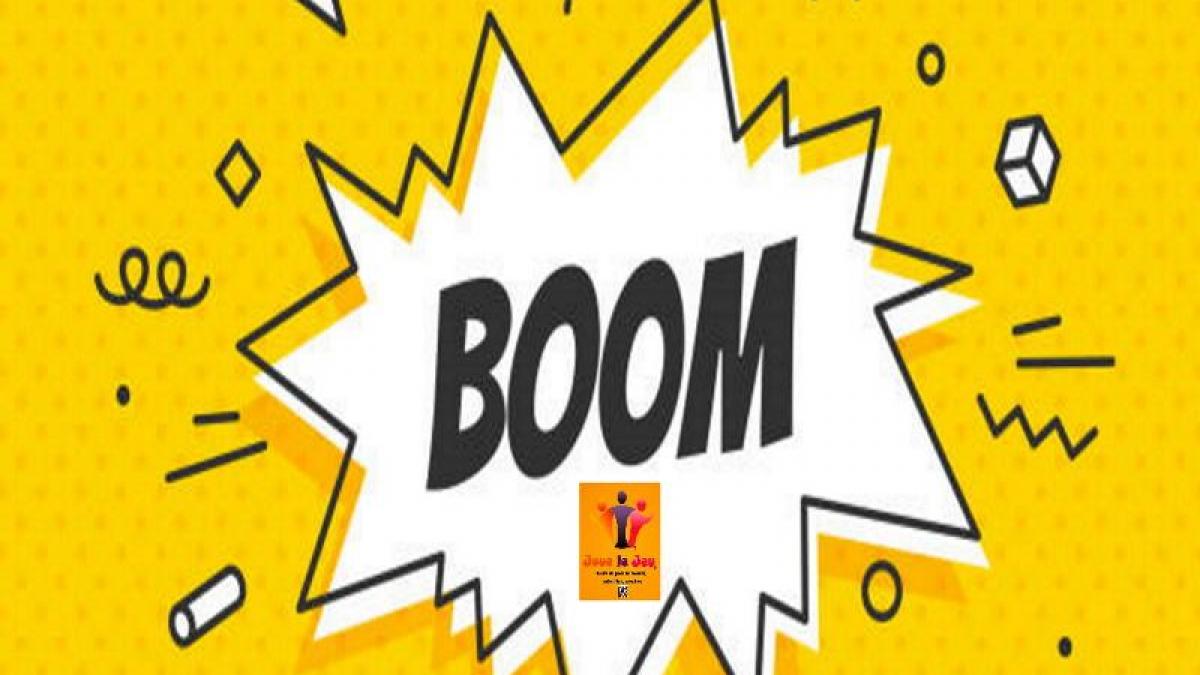Hello everyone!
Today we're going to talk about jacks!
Pick up your knucklebones, for 1 player or more, ages 7 and up, for 20 to 40 minutes, to get the best throw!
The Greeks also used them to question the gods; knucklebones were made of ivory, agate, and other precious materials.
They are now also available in plastic.
The Greeks and Romans used the four knucklebones like dice, trying to make certain combinations.
The modern game is quite different. It consists of five knucklebones, four of which are painted the same color (usually red) and the fifth is black, which is called the "father."
The knucklebones are on the ground; the player picks up the father and throws it into the air. Before catching it in their hand, they must pick up one of the knucklebones lying on the ground. If they succeed, they continue picking up the knucklebones one by one in the same way. Each picked-up knucklebone is set aside.
If the player misses, the game passes to the next player.
If they succeed, the player starts again, but picking up two knucklebones at a time.
A game of flat knucklebones.
They are said to be the ancestors of the dice. They date back to the mists of time and are known to all peoples.
They were either games of skill or a game of chance and divination. For the Greeks, they were reserved for women, but young Greeks also played them.
This game was called astragalism.
"Astragalus" refers to the convoluted shape of these small bones that come from the hind leg of an animal, sheep or other, i.e., a hoofed animal.
For the game of chance, four knucklebones are used; Each of the four sides of the knucklebones has a number on it. They are tossed in the air and the points are counted: it's the ancestor of dice games.
In this game, the "father" knucklebone becomes... "the mother"!
Basic rules of jacks
Materials: 5 knucklebones (4 gray and 1 red: the mother)
Essential rules:
You must not drop the mother. You are allowed to bring the knucklebones closer together. One by one: you must throw the mother into the air and quickly grab a gray knucklebone. Catch the mother before she falls. Two by two: as above, but grab the knucklebones 2 by 23 and 1: as above except you must grab 3, then 14: still the same, but you must grab all 4 knucklebones at once.
The Skull and Crossbones
Place all the knucklebones between your fingers and the mother on the back of your hand. Catch her in the palm of your hand. Then bring the gray knucklebones back with the mother. If a knucklebone falls, you lose.
The Hollow and the Hump
First, choose and say "hollow or hump." Throw the knucklebones into the air, but keep the mother in your hand. If you chose "hollow" and some of the knuckles have landed on the hump side, you must turn them over, throwing the mother in the air each time (remembering to catch it).
The opposite is true if you chose "hump." When all the knuckles are on the chosen side: you win!
The Wall
Wall 1:
Place your hand on the slice.
Throw the mother in the air, pick up one of the four knuckles.
Place them behind the wall, remembering to catch the mother right afterward.
Walls 2, 3, 4:
You must pass 2, 3, 4 knuckles at a time behind the wall without letting the mother fall.
The Sausage
Sausage 4: Place the knuckles with a hand-width gap between them. Pretend your hand is a knife.
Cut the four slices in succession, throwing the mother in the air for each slice. Finally, throw the mother and collect all the knuckles.
Sausage 3: Do the same as sausage 4, but stick 3 knuckles on one side and one on the other. Same rules as before (see photo).
Sausage 2: Place the knuckles as shown in the photo. Cut to the left, middle, and right (throw the mother each time and catch it). Throw the mother again, collect the knuckles, and remember the mother falling back down…
Sausage 1: Place the 4 gray knuckles side by side. Pretend your hand is a knife. Throw the mother in the air, cut left then right, pick up the gray knuckles, and catch the mother.
The Big Wall
Get on the ground as shown in the photo, with your leg forming a wall.
Throw the four knuckles on the ground while holding the mother (in red) between your thumb and forefinger. Throw the father in the air, then take one of the four white knuckles and pass it to the other side of the wall while the mother is in the air, then catch her.
Do the same with the other three white knuckles, trying to group them together.
Remove your leg, throw the mother, and pick up the four white knuckles in one go, then catch the mother (red).
The Well
Take the mother and place her between your thumb and forefinger, forming a well. Take a knucklebone and place it on the back of your hand. Flip it so that it falls back into the well. Do the same with the other three knucklebones.
Finish with a sweep.
The Eiffel Tower
With five knucklebones.
Take four knucklebones in your hand and hold the mother (in red) between your thumb and forefinger in the same hand. I throw the mother in the air and place the other four knuckles on the ground, then I catch the mother. Then I throw the mother in the air and catch the other four knuckles.
If they are far apart, you can bring them together twice.
If the mother touches the ground or if you don't catch all four knuckles in the meantime, you lose, and it's the next player's turn.
The Spider
Place the four knuckles between each finger.
Shape your hand like a spider.
Take the mother in your other hand and throw it in the air.
Slide a knuckle inside the spider and catch the mother. Then throw the mother again immediately. Slide another knuckle, and so on. Repeat by sliding 2, 3, then 4 knuckles.
Bring them together!
Place the knucklebones spaced apart on the table, holding the mother in your hand. (2 to 4 knucklebones)
Throw the mother and bring the knucklebones together at a single point.
When the knucklebones are close together, catch the mother before it falls to the ground.
Have a good day and good game ;)








Add a comment